This is basically the same question that was posted here: How to merge a transparent png image with another image using PIL but using with scikit-image instead of PIL. I mean to paste the png keeping its transparency on top of a background image. Also, if there is actually a way of doing it, I would like to know which one is faster (PIL or scikit-image). Thanks.
Asked
Active
Viewed 5,863 times
2
-
Why don't use opencv, its quite faster – theMerakist Dec 26 '18 at 12:06
-
@ManojNirale Is it? How many orders of magnitude? – hipoglucido Dec 26 '18 at 21:36
2 Answers
6
Read the two images and add using the formula img1*alpha + img2*(1-alpha)
import numpy as np
from matplotlib import pyplot as plt
import skimage.io
img1 = skimage.io.imread('Desert.jpg')
img2 = skimage.io.imread('Penguins.jpg')
img3 = np.ubyte(0.7*img1 + 0.3*img2)
plt.imshow(img3)
Another option could be to use the alpha channel of two images as masks as below
import numpy as np
from matplotlib import pyplot as plt
import skimage.io
img1 = skimage.io.imread('img1.png')
img2 = skimage.io.imread('img2.png')
mask1 = img1.copy()
mask2 = img2.copy()
mask1[:,:,0] = mask1[:,:,3]
mask1[:,:,1] = mask1[:,:,3]
mask1[:,:,2] = mask1[:,:,3]
mask2[:,:,0] = mask2[:,:,3]
mask2[:,:,1] = mask2[:,:,3]
mask2[:,:,2] = mask2[:,:,3]
img3 = np.bitwise_or(np.bitwise_and(img1, mask1),np.bitwise_and(img2, mask2)) ;
plt.subplot(2,2,1)
plt.imshow(img1)
plt.subplot(2,2,2)
plt.imshow(img2)
plt.subplot(2,2,3)
plt.imshow(img3)
dwitvliet
- 7,242
- 7
- 36
- 62
user8190410
- 1,264
- 2
- 8
- 15
-
2The question was about merging a *"transparent PNG"* with another image, but your answer uses 2 JPEGs which don't support transparency... – Mark Setchell Dec 26 '18 at 14:03
2
Inspired by user8190410's answer, I built my own function to do it:
from skimage import data
import numpy as np
x, y = 100, 100
background = data.imread('background.jpg') / 255.
image = data.imread('image.png') / 255.
background_height, background_width, background_depth = background.shape
image_height, image_width, image_depth = image.shape
template = np.zeros((background_height, background_width, image_depth))
template[y : y + image_height, x : x + image_width, :] = image
mask = np.stack([template[:,:,3] for _ in range(3)], axis = 2)
inv_mask = 1. - mask
result = background[:,:,:3] * inv_mask + template[:,:,:3] * mask
plt.figure(figsize = (15, 15))
plt.subplot(1, 3, 2)
plt.imshow(image)
plt.subplot(1, 3, 1)
plt.imshow(background)
plt.subplot(1, 3, 3)
plt.imshow(result)
plt.tight_layout()
plt.show()
Please let me know if I can do something to improve computation speed
Community
- 1
- 1
hipoglucido
- 545
- 1
- 7
- 20
-
Please provide a **typical** foreground image that you want to overlay - so I can see whether it has binary or continuous transparency. – Mark Setchell Dec 27 '18 at 17:49


